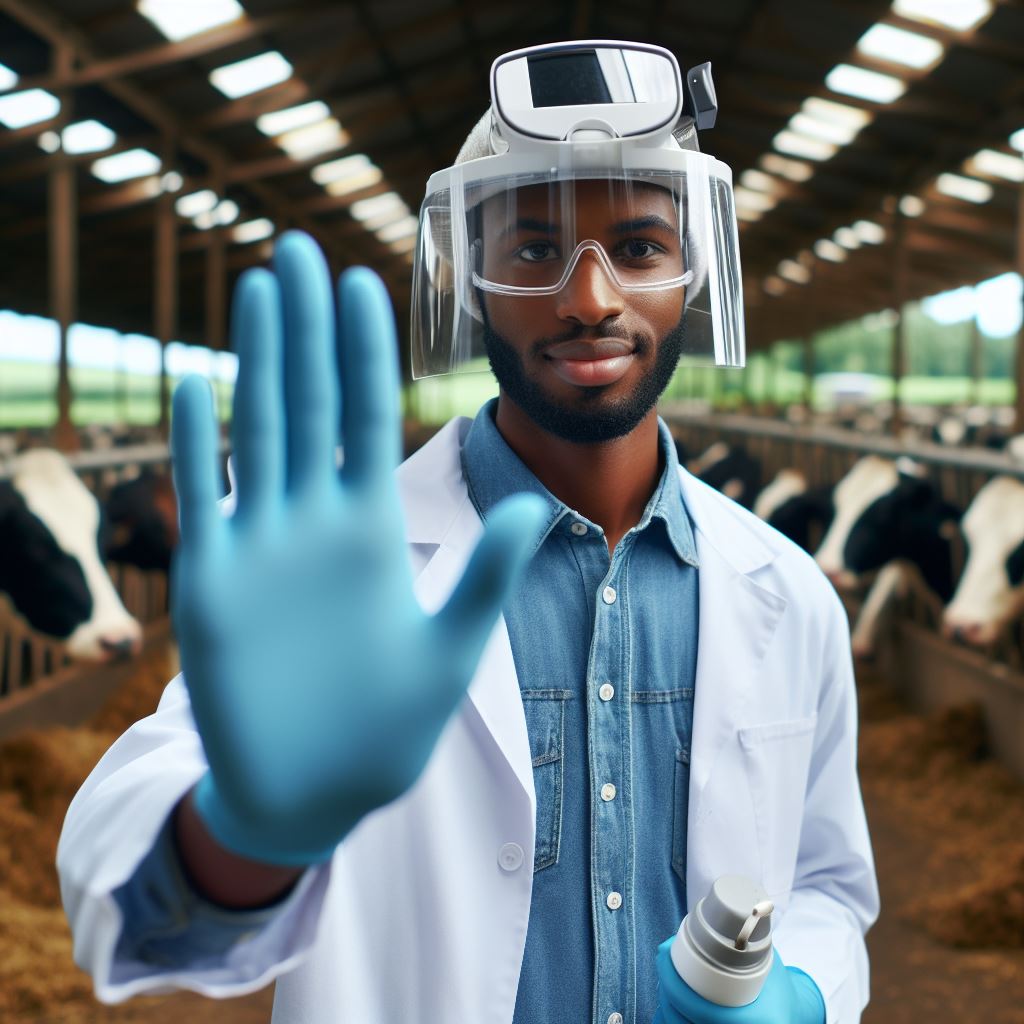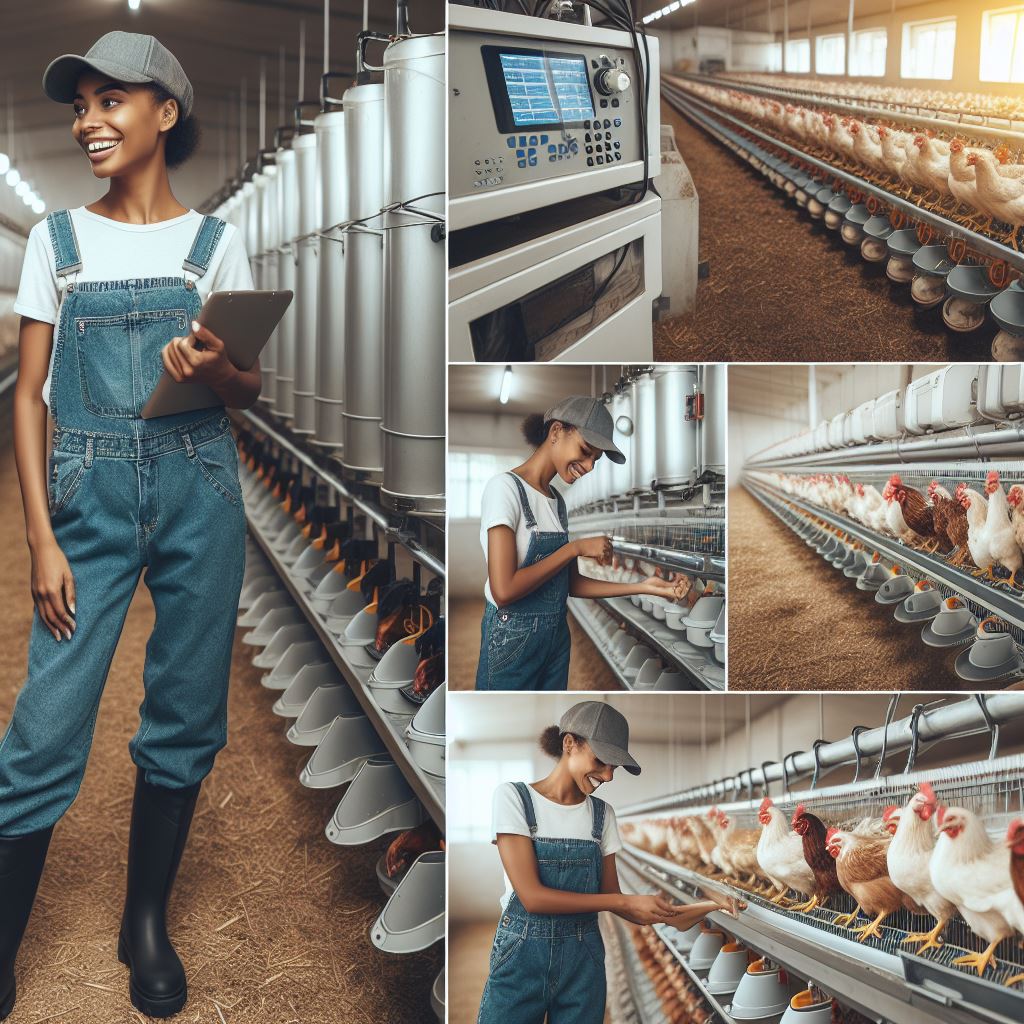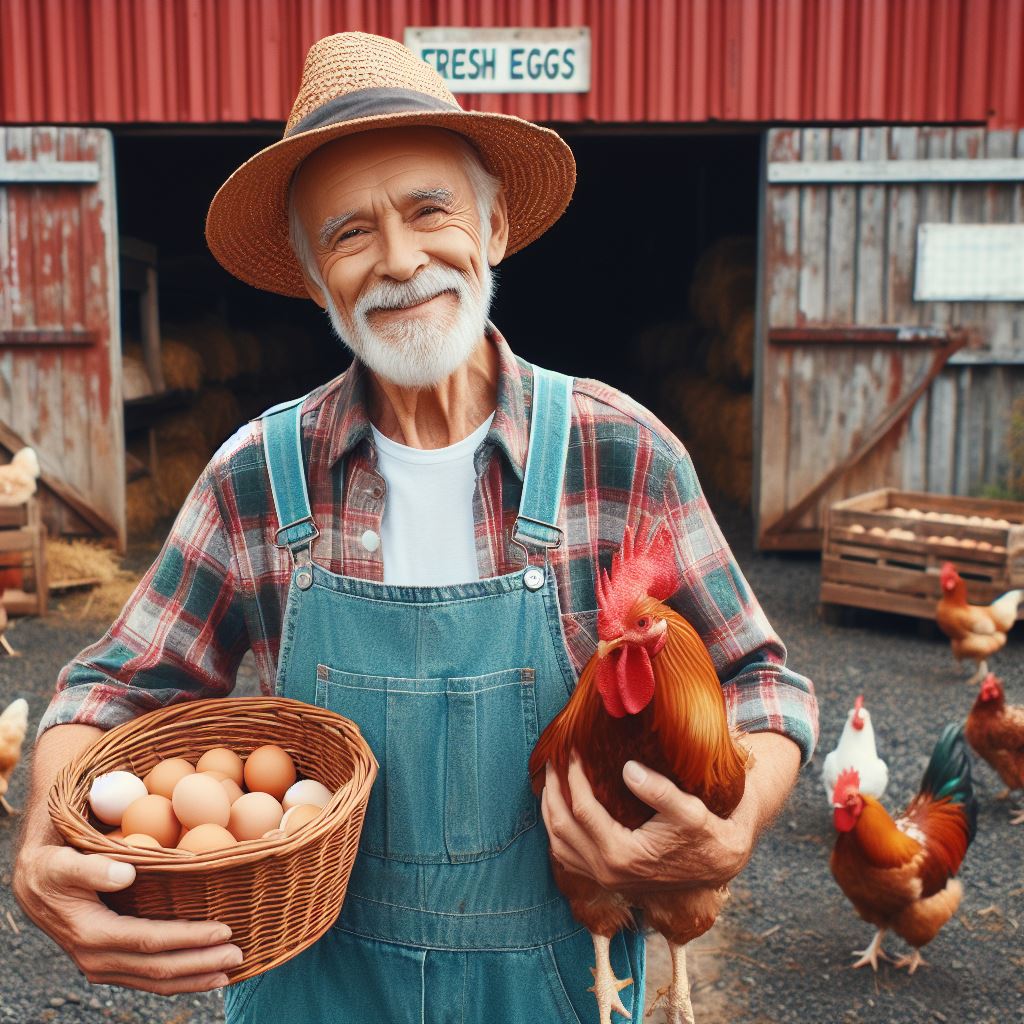Introduction
Biosecurity is the set of preventive measures taken to protect livestock farms from diseases and pathogens.
It is crucial in maintaining a healthy and safe environment for animals.
This section provides an overview of key biosecurity practices.
Definition of Biosecurity
Biosecurity refers to the measures and protocols implemented to prevent the entry and spread of infectious agents, such as bacteria, viruses, and parasites, in livestock farms.
Importance of Biosecurity in Livestock Farms
Biosecurity is essential as it protects animals from diseases, reduces the risk of transmission, minimizes economic losses, and ensures food safety for consumers.
Brief Overview of Key Practices in Biosecurity
- Farm Hygiene: Regular cleaning and disinfection of farm facilities help in reducing disease-causing agents.
- Animal Isolation: Isolating newly arrived animals, sick animals, or those showing signs of infection prevents the spread of diseases.
- Controlled Access: Limiting access to the farm and establishing strict entry protocols prevents unauthorized individuals and vehicles from contaminating the premises.
- Vaccination: Regularly vaccinating animals against common diseases strengthens their immune system and prevents infections.
- Pest Control: Effective pest management, such as controlling rodents and insects, is crucial in preventing diseases and contamination.
- Biosecurity Training: Educating farm personnel about biosecurity measures and protocols ensures proper implementation and adherence to biosecurity practices.
- Record Keeping: Maintaining accurate records of animal movements, health, and treatments helps in disease surveillance and traceability.
Biosecurity plays a vital role in safeguarding livestock farms from infectious diseases, protecting animal health, and ensuring the production of safe food.
By implementing key biosecurity practices, farmers can minimize risks and maintain a healthy environment for their animals.
Read: Sheep Flock Health: Common Illnesses Guide
Biosecurity Practices for Livestock Farms
Animal health management
- Regular veterinary visits ensure the well-being and early detection of any health issues.
- Vaccination and immunization protocols should be followed to protect animals from common diseases.
- Implement quarantine procedures to prevent the introduction of diseases from new animals.
- Proper nutrition and herd management promote overall health and disease resistance in livestock.
Facility and equipment hygiene
- Maintain cleanliness and sanitation in barns, stables, and housing areas to minimize disease spread.
- Regularly disinfect equipment and tools used in livestock farming to prevent contamination.
- Follow proper waste management and disposal practices to prevent disease transmission.
- Control visitor access and enforce strict biosecurity protocols to limit disease introduction.
Disease surveillance and monitoring
- Conduct regular health checks and monitor animals for signs of illness or disease.
- Implement early disease detection strategies and promptly report any suspected cases.
- Implement disease control and containment measures to prevent disease spread within the farm.
- Collaborate with veterinary authorities for disease monitoring and surveillance activities.
Pest and animal control
- Implement measures to minimize pests’ entry and impact on livestock farms.
- Proper rodent control and prevention strategies help reduce the risk of disease transmission.
- Manage vector-borne diseases through effective control measures, such as insecticides or repellents.
- Develop and maintain biosecurity plans specifically designed to address pests and animals.
Implementing these biosecurity practices is crucial to ensure the health and well-being of livestock and the sustainability of livestock farms.
By actively managing animal health, maintaining facility and equipment hygiene, monitoring for diseases, and controlling pests and animals, farmers can minimize the risk of disease outbreaks and protect their livestock investments.
Collaboration with veterinary authorities and staying informed about the latest biosecurity protocols further enhances the effectiveness of these practices.
Remember, biosecurity is a shared responsibility that requires constant vigilance and commitment from all stakeholders involved in the livestock industry.
By consistently implementing these key practices, livestock farms can enhance their overall biosecurity measures and contribute to a safer and more sustainable industry.
Read: Horse Health: Equine Disease Prevention

Challenges and Solutions in Biosecurity
Biosecurity in livestock farms is crucial for preventing the spread of diseases and protecting the health of animals and humans.
Transform Your Agribusiness
Unlock your farm's potential with expert advice tailored to your needs. Get actionable steps that drive real results.
Get StartedHowever, implementing effective biosecurity measures can be challenging.
This section discusses the key challenges faced by livestock farms in biosecurity and provides solutions to address them.
Financial constraints and limited resources
- Seeking financial assistance and grants: Livestock farms can explore funding opportunities to overcome financial constraints and invest in biosecurity infrastructure.
- Collaboration with government agencies or industry associations: Partnering with these entities can provide access to additional resources, expertise, and support.
- Prioritizing biosecurity practices based on cost-effectiveness: Livestock farms should assess the cost-effectiveness of different biosecurity practices and prioritize those that offer the greatest benefits with limited resources.
Lack of knowledge and awareness
- Providing educational resources and training: Livestock farms can develop educational materials and conduct training programs to increase knowledge and awareness among farmers, employees, and stakeholders.
- Partnerships with universities and research institutions: Collaborating with academic and research institutions allows access to scientific expertise and the latest advancements in biosecurity practices.
- Utilizing online platforms and webinars for information dissemination: Livestock farms can leverage online platforms and webinars to reach a wider audience and provide easily accessible information on biosecurity practices.
Compliance and commitment
- Regular employee training and awareness programs: Conducting regular training sessions and awareness programs ensure that all employees understand and adhere to biosecurity protocols.
- Incentives and rewards for adhering to biosecurity protocols: Providing incentives and rewards to employees who consistently follow biosecurity measures can foster a culture of compliance.
- Continued evaluation and updating of biosecurity protocols: Regularly evaluating the effectiveness of biosecurity practices and updating protocols based on new information and emerging threats ensure the ongoing efficacy of biosecurity measures.
Therefore, addressing challenges in biosecurity requires a multi-faceted approach.
By tackling financial constraints, enhancing knowledge and awareness, and fostering compliance and commitment, livestock farms can successfully implement and maintain effective biosecurity practices.
It is crucial for the industry as a whole to prioritize biosecurity to safeguard animal welfare, public health, and the sustainability of livestock farming.
Read: Dairy Cow Health: Preventing Common Diseases
Case Studies and Success Stories
Examples of livestock farms with successful biosecurity programs
- Key practices implemented: Farm A implemented strict visitor protocols, regular vaccination programs, and controlled access to animal housing.
- Measurable outcomes and improvements: The farm saw a significant decrease in disease outbreaks and improved animal health and productivity.
- Lessons learned and recommendations for other farmers: It is crucial to educate staff and visitors on biosecurity measures, establish quarantine protocols, and maintain proper hygiene practices.
- Key practices implemented: Farm B adopted a comprehensive record-keeping system, regular health monitoring, and strict animal movement controls.
- Measurable outcomes and improvements: The farm achieved higher biosecurity standards, reduced disease transmission, and improved profitability.
- Lessons learned and recommendations for other farmers: Regular training of personnel, maintaining accurate records, and investing in biosecurity infrastructure are vital for success.
Success story – Dakota Lakes Research Farm (South Dakota)
Farm C, located in a region prone to disease outbreaks, implemented a robust biosecurity program that yielded impressive results.
- Key practices implemented: The farm created a restricted access zone, enforced strict sanitation procedures, and implemented regular disease testing.
- Measurable outcomes and improvements: The farm experienced a significant reduction in disease incidence and associated economic losses.
- Lessons learned and recommendations for other farmers: Implementing biosecurity requires dedication, cooperation with authorities, and constant vigilance.
- Key practices implemented: Dakota Lakes Research Farm also established a partnership with a veterinary expert who provided regular on-site consultations and training.
- Measurable outcomes and improvements: The farm achieved a higher level of staff competence and improved disease detection and response capabilities.
- Lessons learned and recommendations for other farmers: Collaborating with experts can greatly enhance biosecurity measures and overall farm success.
Success story – Fair Oaks Farms (Indiana)
Farm D faced multiple disease challenges until they implemented a comprehensive biosecurity program.
- Key practices implemented: The farm tightened animal movement controls, introduced footbaths, and implemented regular biosecurity audits.
- Measurable outcomes and improvements: Disease outbreaks were significantly reduced, and the farm achieved better overall animal health and productivity.
- Lessons learned and recommendations for other farmers: Regular auditing, continuous staff training, and strict adherence to protocols are imperative for success.
- Key practices implemented: Fair Oaks Farms established a partnership with a local university, allowing for ongoing research collaboration and access to expertise.
- Measurable outcomes and improvements: The farm benefited from improved disease management strategies and access to cutting-edge research findings.
- Lessons learned and recommendations for other farmers: Collaborating with academic institutions can provide valuable insights and aid in continuous improvement.
In short, these case studies and success stories demonstrate the importance of implementing key biosecurity practices on livestock farms.
By adopting strict protocols, monitoring measurable outcomes, and learning from experiences, farmers can achieve significant improvements in disease control, animal health, and overall farm profitability.
Read: Swine Flu: Protecting Your Pig Herds
Conclusion
Recap of key points discussed
In this blog section, we have discussed the key practices of biosecurity in livestock farms.
We highlighted the importance of developing and implementing strict protocols to prevent the spread of diseases and maintain the health of animals.
These practices include proper sanitation, quarantine procedures, vaccination, and pest control.
Final thoughts on the significance of biosecurity in livestock farms
Biosecurity is crucial in livestock farms as it not only ensures the well-being of the animals but also safeguards public health and the economy.
By preventing the entry and spread of diseases, biosecurity measures protect the entire livestock industry from devastating outbreaks that can lead to significant losses.
Encouragement for farmers to prioritize and implement biosecurity practices
We strongly encourage all farmers to prioritize and diligently implement biosecurity practices on their farms.
By adhering to these measures, they can minimize the risk of disease transmission, reduce mortality rates, improve productivity, and maintain the sustainability of their livestock operations.
Investing in biosecurity is investing in the long-term success and resilience of their businesses.
Remember, a comprehensive biosecurity plan is essential to protect the health of your animals, your farm, and the wider livestock industry.




